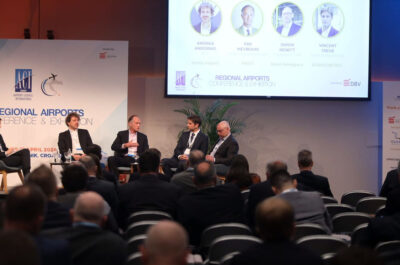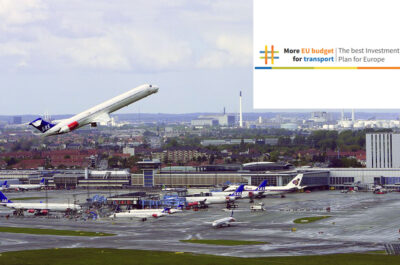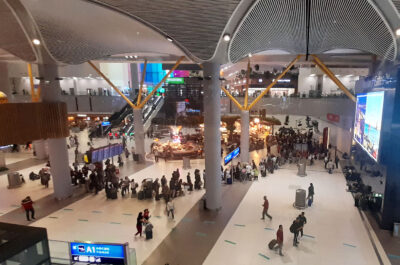Regional airports were hit harder by the global financial crisis and their traffic recovery has consistently lagged behind the rest of the industry – with passenger traffic up by just +13.9% since 2008 compared with an industry average of +18.1%.
REYKJAVIK – The regional airport community gathered in Reykjavik for the 8th annual ACI Europe Regional Airports Conference, hosted by Isavia and Keflavik airport. With over 175 participants from airports, airlines, industry suppliers and institutional stakeholders, the event’s theme is Innovate, Sustain & Compete – with a focus on addressing the main challenges faced specifically by regional airports across Europe.
Improving Traffic Recovery
Regional airports were hit harder by the global financial crisis and their traffic recovery has consistently lagged behind the rest of the industry – with passenger traffic up by just +13.9% since 2008 compared with an industry average of +18.1%. However, 2014 finally saw regional airports growing more in line with the rest of the industry (+5.1%) – a trend which has also been confirmed since the beginning of the year (+5.1%).
Olivier Jankovec, Director General, ACI Europe commented “Regional airports are finally catching up with their larger peers and are now seeing more dynamic passenger growth. This is good news. But as ever, regional airports live in a world of extremes when it comes to traffic performance. For all the improvements in trading conditions, double-digit growth at many airports comes with flat or decreasing traffic at others. Competition to keep existing routes and develop new ones is fierce, with airlines dictating the terms under which they decide to operate.”
Connectivity Challenge
These developments also reflect structural changes, as airlines keep focusing on larger markets and higher frequencies in search of better yields – irrespective of their business model. In spite of lower oil prices, the number of intra-European routes operated by large full service carriers and regional airlines this summer is down by -7% and -17% respectively when compared with last year. Even low cost airlines are no longer growing their intra-European route network and they have actually reduced their aircraft bases at regional airports by -13%.
Jankovec said “Network development has become more concentrated and less inclusive, leaving smaller regional airports and their communities exposed to losses in connectivity. Since 2008, regional airports have seen their direct connectivity grow by just +2.3%, while the direct connectivity of hub airports has grown by +6.5%. For more than a third of regional airports, overall connectivity levels remain lower than they were in 2008.”
He added “We do not see much improvement in the short term. Beyond airline behaviour, a major issue for regional connectivity is the development of a new generation of regional aircraft able to deliver the operational cost efficiencies required for serving smaller markets profitably.”
Economic Sustainability Challenge
More than ever, size dictates profitability at regional airports. 66% of airports with less 5 million passengers are loss making, with that percentage increasing to 77% for those with less than 1 million passengers.
Reductions in operating costs at regional airports are now lagging behind the industry average (-1.8% versus -4.6%), due to the inherent difficulty of achieving further cost reductions after years of sustained efforts. Meanwhile, capital costs are increasing well above the industry average, reflecting ongoing challenges in securing affordable external financing.
In that context, regional airports which are part of wider public or private airport networks are better positioned to face these economic challenges than the ones standing on their own.
Supportive & Targeted Policies Needed
Airports are essential for economic growth and jobs across Europe’s regional communities. While other transport modes also play an important role for cohesion and economic development, the global outreach and speed of air connectivity is unparalleled.
This requires more supportive and targeted policies addressing the connectivity and economic sustainability challenges that these airports are facing. Thomas Langeland, Chair of the Regional Airports’ Forum and Director of Avinor Kristiansand Airport said “With the European Commission preparing a new strategy for aviation, as part of its renewed focus on growth, jobs and investment, it goes without saying that the policy framework for regional airports should be improved. In particular, additional efforts are needed to develop a more tailor made approach to security and safety regulations – to avoid costly one-size-fits-all approaches.”
He added “Also, public financing should not be considered as a taboo, but rather as a way to redress structural economic disadvantage. Finally, more aviation liberalisation is the way forward, for both regional airports and larger ones. This is about our ability to diversify our traffic mix, offering convenient connections requested by our local communities and ultimately enhancing business resilience.”
Theodore is the Co-Founder and Managing Editor of TravelDailyNews Media Network; his responsibilities include business development and planning for TravelDailyNews long-term opportunities.






























































































































































































